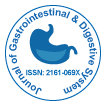Unsere Gruppe organisiert über 3000 globale Konferenzreihen Jährliche Veranstaltungen in den USA, Europa und anderen Ländern. Asien mit Unterstützung von 1000 weiteren wissenschaftlichen Gesellschaften und veröffentlicht über 700 Open Access Zeitschriften, die über 50.000 bedeutende Persönlichkeiten und renommierte Wissenschaftler als Redaktionsmitglieder enthalten.
Open-Access-Zeitschriften gewinnen mehr Leser und Zitierungen
700 Zeitschriften und 15.000.000 Leser Jede Zeitschrift erhält mehr als 25.000 Leser
Indiziert in
- Index Copernicus
- Google Scholar
- Sherpa Romeo
- Öffnen Sie das J-Tor
- Genamics JournalSeek
- Nationale Wissensinfrastruktur Chinas (CNKI)
- Elektronische Zeitschriftenbibliothek
- RefSeek
- Hamdard-Universität
- EBSCO AZ
- OCLC – WorldCat
- SWB Online-Katalog
- Virtuelle Bibliothek für Biologie (vifabio)
- Publons
- Genfer Stiftung für medizinische Ausbildung und Forschung
- Euro-Pub
- ICMJE
Nützliche Links
Open-Access-Zeitschriften
Teile diese Seite
Abstrakt
Efficacy and Durability of Cryospray Ablation for Dysplastic Barrett’s Esophagus
Jayaprakash Sreenarasimhaiah
Background: Dysplastic Barrett's esophagus is the precursor to esophageal adenocarcinoma. While traditional therapy has included surgical resection, several endoscopic ablation techniques have become well-established. The newest of these modalities is cryospray ablation using liquid nitrogen.
Objective: To determine efficacy of cryospray ablation therapy in eradication of Barrett's mucosa and dysplastic tissue as well as the durability of these outcomes.
Methods: A retrospective analysis of 33 consecutive patients who underwent endoscopic cryoablation therapy was performed. Patients were followed at 8 weeks, 6 months, and annually following completion of ablation. Biopsies were taken.
Results: A mean of 2.4 sessions (range 1-4) was performed with a mean follow-up of 12.5 months (range 6-36). 100% of patients with low-grade dysplasia achieved complete eradication of dysplasia at a minimum follow-up of 6 months. 95% of highgrade dysplasia was eradicated at 6 months with 5% having persistent focal low-grade dysplasia. In 9% of cases, intramucosal carcinoma was also treated successfully with cryospray ablation therapy. Overall stricture rate was 3% following ablation therapy. No perforations or other serious complications occurred
Conclusions: Cryoablation therapy offers an effective minimimally-invasive method to treat dysplastic Barrett's esophagus as well as some early intramucosal adenocarcinoma. There is minimal morbidity from this procedure and has potentially durable results at follow-up endoscopic surveillance.
Zeitschriften nach Themen
- Allgemeine Wissenschaft
- Biochemie
- Chemie
- Genetik und Molekularbiologie
- Geologie und Geowissenschaften
- Immunologie und Mikrobiologie
- Klinische Wissenschaften
- Krankenpflege und Gesundheitsfürsorge
- Landwirtschaft und Aquakultur
- Lebensmittel & Ernährung
- Maschinenbau
- Materialwissenschaften
- Medizinische Wissenschaften
- Pharmazeutische Wissenschaften
- Physik
- Sozial- und Politikwissenschaften
- Umweltwissenschaften
- Veterinärwissenschaften
Klinische und medizinische Fachzeitschriften
- Anästhesiologie
- Augenheilkunde
- Betrieb
- Dermatologie
- Diabetes und Endokrinologie
- Gastroenterologie
- Genetik
- Gesundheitspflege
- Immunologie
- Infektionskrankheiten
- Kardiologie
- Klinische Forschung
- Medizin
- Mikrobiologie
- Molekularbiologie
- Neurologie
- Onkologie
- Pädiatrie
- Pathologie
- Pflege
- Toxikologie
- Zahnheilkunde

 English
English  Spanish
Spanish  Chinese
Chinese  Russian
Russian  French
French  Japanese
Japanese  Portuguese
Portuguese  Hindi
Hindi